With dreamy landscapes and distant, pastel-colored portraits, Claude Monet’s art is of rare, timeless beauty.
This elementary-level art history lesson introduces children to an appreciation for his art, and for the Impressionism movement that he fathered.
Who was Claude Monet?
Claude Monet, the father of Impressionism, was an artist who painted the world in breathtaking, ethereal strokes of color. His distinctive artistic style celebrated the beauty of the fleeting moment, emphasizing the changing effects of light and atmosphere.
Monet’s art was a visual symphony of brushwork and broken color, capturing the essence of nature en plein air, or “in the open air.”
Impressionism, the art movement Monet helped pioneer, sought to depict the immediate and emotional impact of a scene rather than precise, detailed representations.
It was a rebellion against the rigid constraints of traditional art, favoring instead the spontaneous expression of light, color, and atmosphere.
One of Monet’s most renowned subjects was the landscape. His art often featured serene scenes of water lilies in his beloved Giverny garden. These paintings showcased his fascination with the interplay of light and water, as well as his ability to capture the ever-changing atmosphere of nature.
Monet’s distinctive brushwork was a hallmark of his style. He employed short, thick strokes, often in separate, contrasting colors, creating an effect known as “broken color.” This technique allowed colors to blend visually when viewed from a distance, giving his works a luminous quality that brought scenes to life.
Perhaps the most famous of Monet’s series is his collection of paintings of the Rouen Cathedral. In this series, he explored the concept of reflection by portraying the cathedral at different times of day and in varying lighting conditions. Each painting in the series captured the unique impression of the cathedral’s grandeur, as the colors and atmosphere shifted from dawn to dusk.
Monet’s art was not limited to his famous series; he also captured the vibrant palette of gardens, haystacks, and beaches, each piece a testament to his mastery of color and light. His plein air technique allowed him to observe and paint nature directly, rendering it with unparalleled freshness and immediacy.
His sanctuary was Monet’s Garden, a haven of tranquility and inspiration in Giverny, France. Here, he cultivated the renowned water lilies and Japanese bridge that became the subjects of his iconic paintings. The ever-changing beauty of his garden was a boundless source of inspiration, and Monet’s ability to convey its allure is a testament to his genius.
As Monet’s artistic journey evolved, so did his subjects. He painted the haystacks in his field with meticulous attention to the shifting light and atmosphere. The result was a series of paintings that, despite featuring the same subject, each conveyed a distinct mood and impression.
Claude Monet’s influence on the art world remains profound. His bold departure from traditional artistic conventions and his commitment to capturing the ephemeral essence of life through broken color and expressive brushwork left an indelible mark on the art world. His landscapes, water lilies, and series of cathedrals stand as timeless examples of the power of Impressionism.
Claude Monet’s artistic style is a luminous celebration of the transient beauty of the world. Through the lens of Impressionism, he transformed landscapes and everyday scenes into mesmerizing, vivid impressions of light and color.
Monet’s art remains a testament to the enduring power of creativity and the ability of an artist to convey the essence of life through their work.
Key Vocabulary for this Lesson
Atmosphere: The overall mood or feeling created in a painting, often influenced by light, color, and the environment.
Broken Color: A technique used by Impressionist artists like Monet, where colors are applied in separate strokes, allowing them to blend visually when viewed from a distance.
Exhibition: A public display of artworks, often in a gallery or museum, where people can view and appreciate the art.
En Plein Air: A French term that means “in the open air,” referring to the practice of painting outdoors.
Impressionism: An art movement that emphasizes capturing the immediate, transient effects of light and color in outdoor scenes.
Landscape: A painting or artwork that depicts outdoor scenery, such as forests, fields, rivers, and mountains.
Series: A group of artworks that share a common theme or subject, often created by an artist over an extended period.
Water Lilies: A type of aquatic plant often featured in Claude Monet’s paintings, known for its colorful and reflective qualities.
Recommended Reading
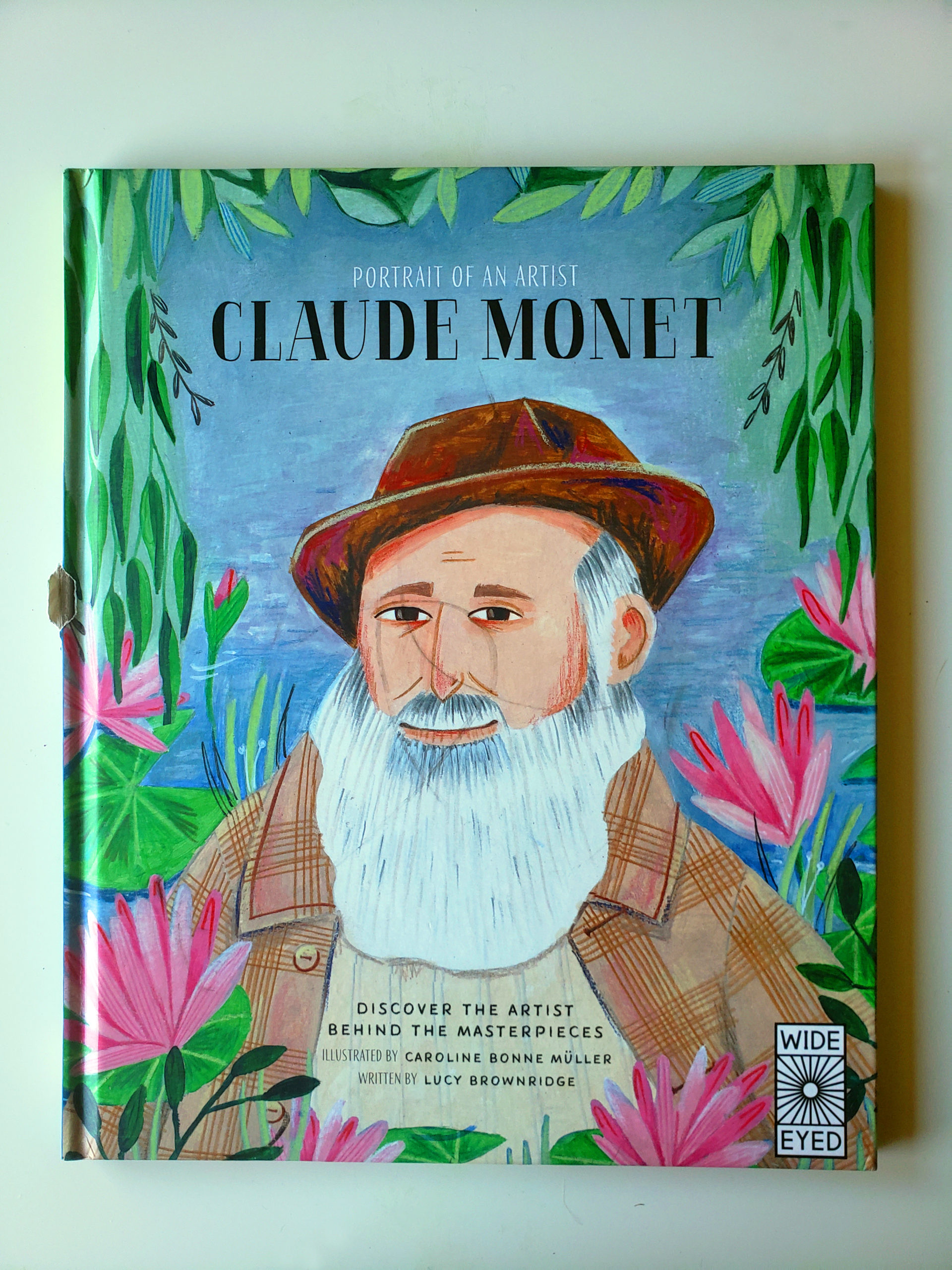
I try always to round out my art history lessons with at least one age-appropriate book, and I am currently working my way through the Portrait of an Artist series with my students.
I like it so much, that I used it for my lessons on Van Gogh and Frida Khalo.
The one for (affiliate link —–>) Claude Monet is also visually appealing and well-written.
Claude Monet Elementary-Level Art Project
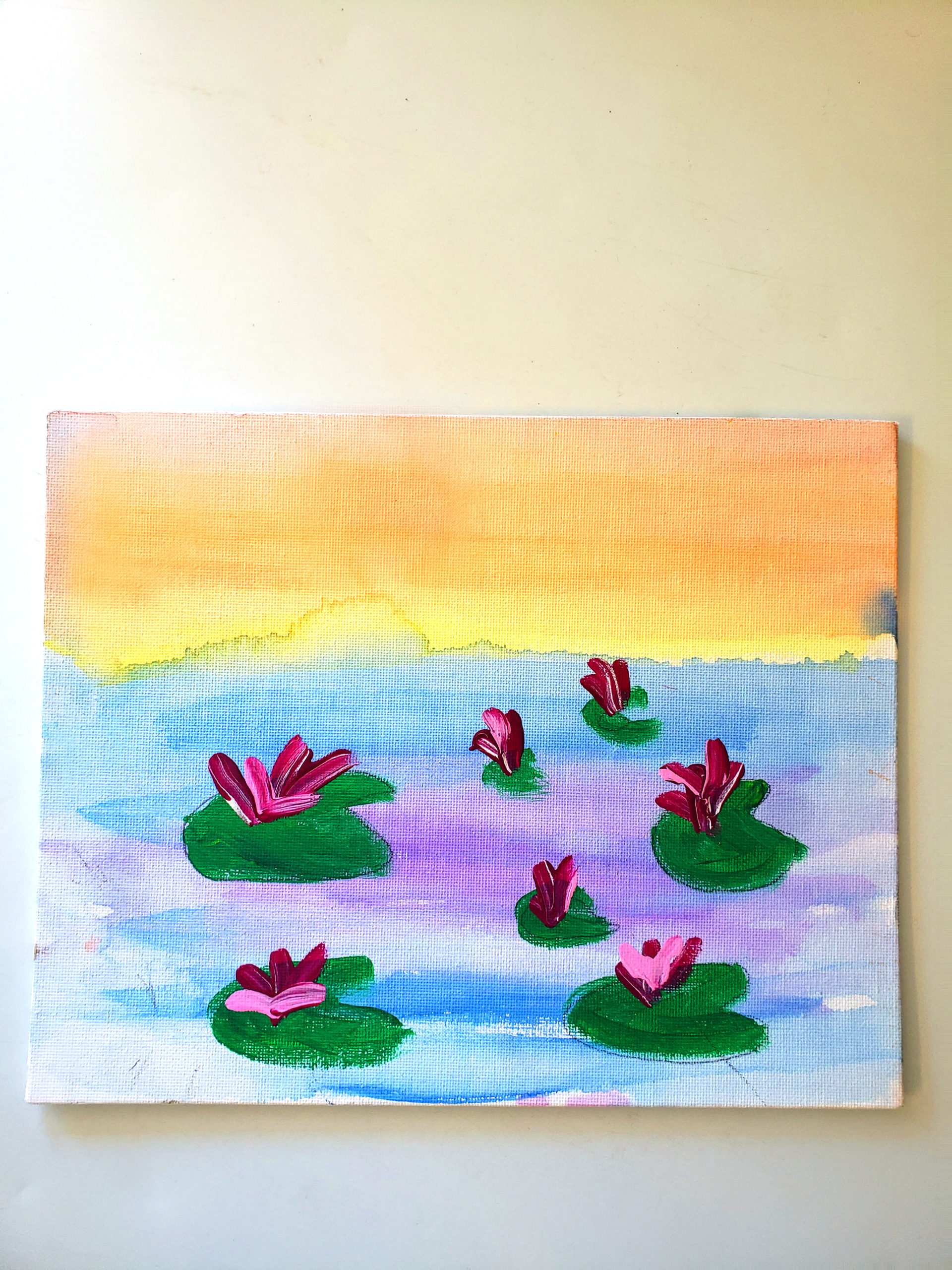
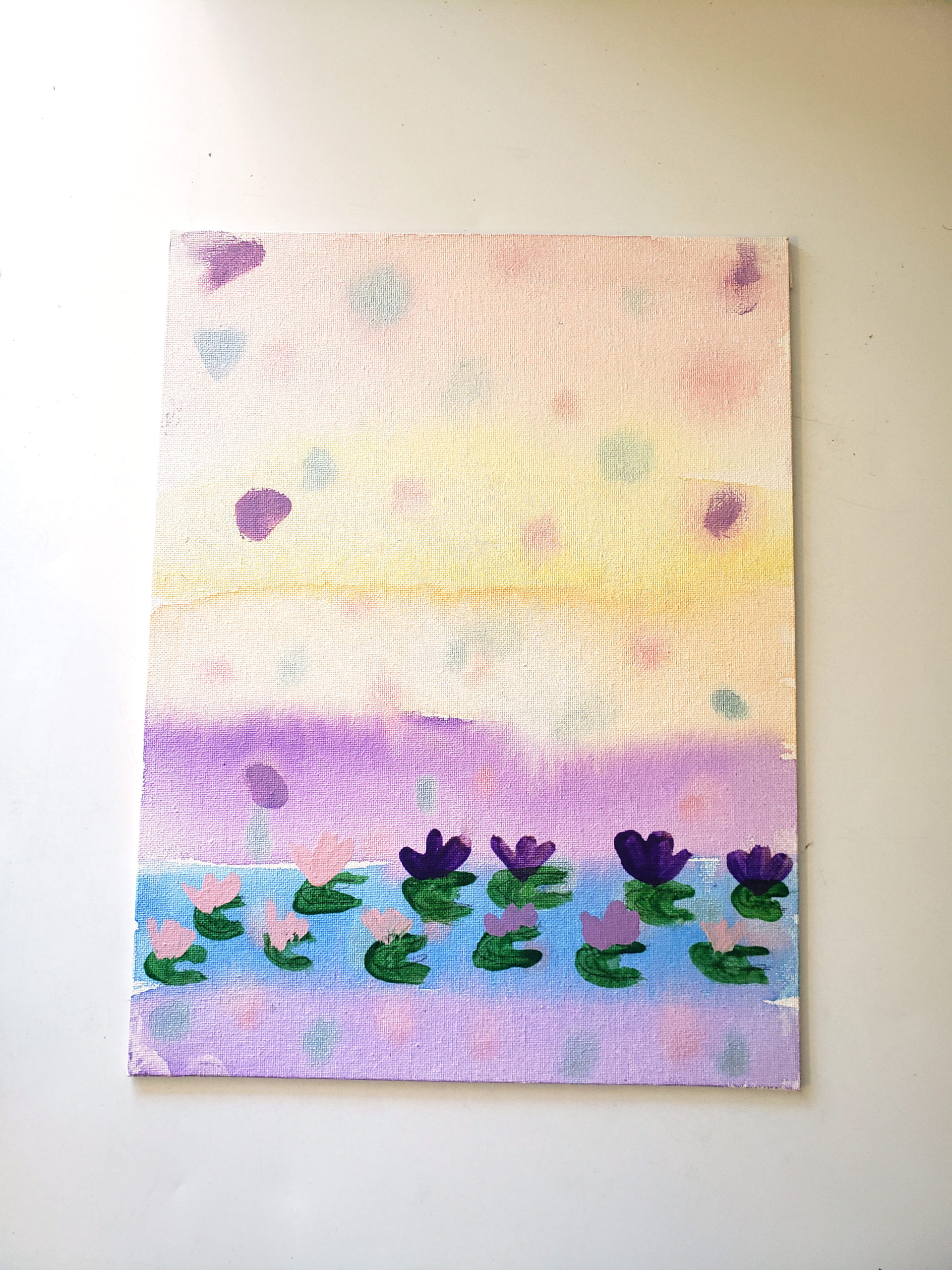
Materials:
*canvases or watercolor paper
*watercolors
*paintbrushes
*pencils
*Acrylic paint
Step 1
Do the background in watercolors.
The fainter, less saturated colors make the waterlilies pop out of the foreground when you do them later.
I encouraged the kids to do the waterline in cool colors, and the skyline in warm colors for a sunset effect, but all cool colors works as well.
Step 2
Allow the watercolors to dry completely.
(You may be able to do this in one class session by doing the suggested reading/vocabulary while it dries).
Step 3
Paint the waterlilies in acrylic. I told the kids to make a “Pac-Man shape,” and then quickly discovered that no child knows who Pac-Man is anymore.
So try to “make a C-shape with a triangle cut out.”
Then, have them paint the flowers. I had them do the saturated color first, and then let them come back in with the highlights later.
They came out super cute!
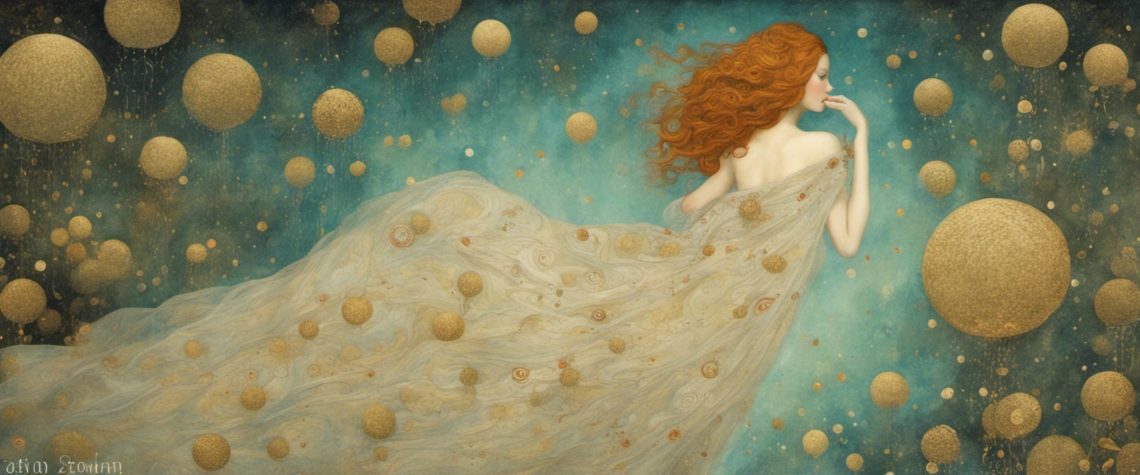
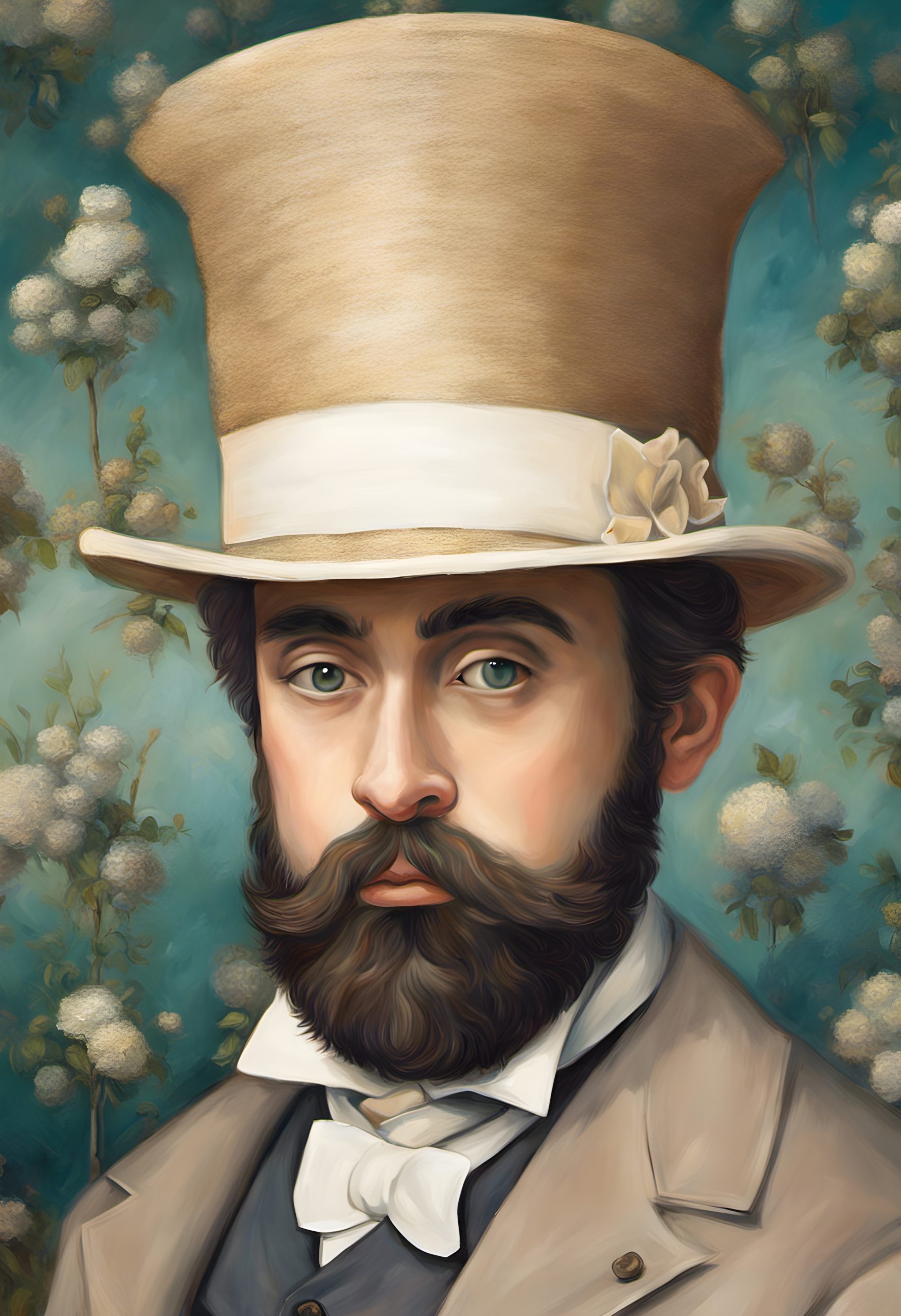
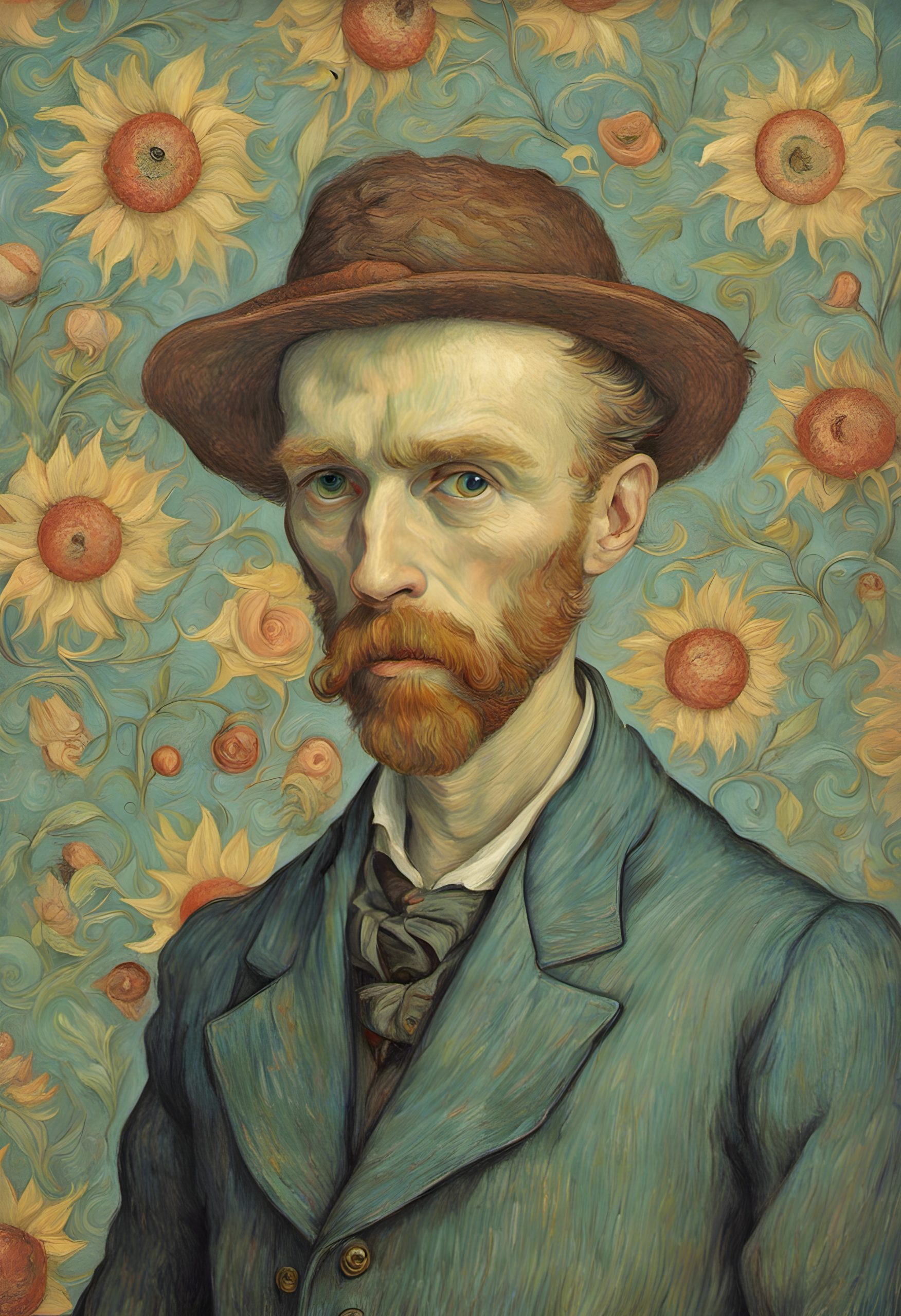
1 Comment